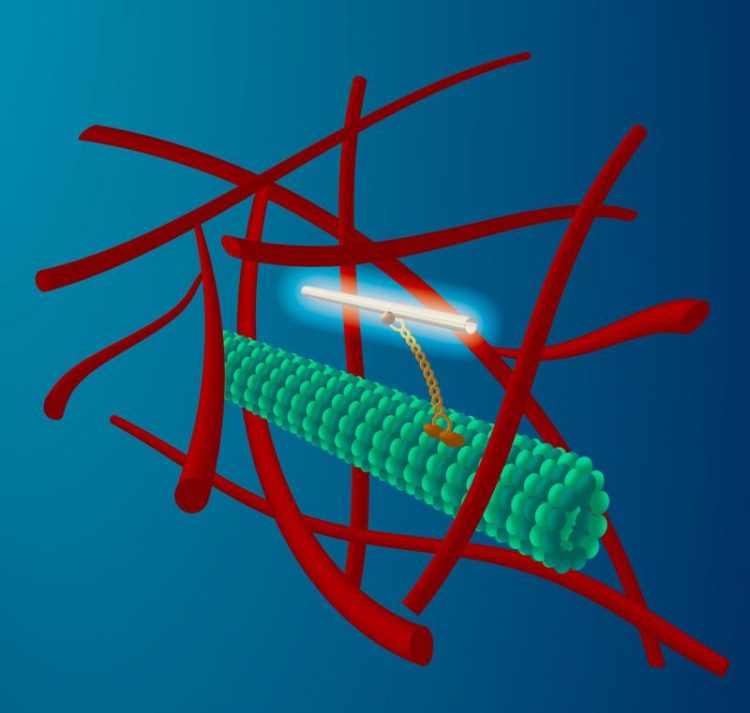Göttingen scientists discover new biological transport mechanism in cells

An international team of scientists led by the University of Göttingen has discovered a new biological transport mechanism in cells. Foto: M. Leunissen, Dutch Data Design
An international team of scientists led by the University of Göttingen has discovered a new biological transport mechanism in cells. The researchers from the Faculty of Physics, Vrije Universiteit Amsterdam and Rice University in Houston developed and applied a new method to visualize and track single molecules inside living cells and whole organisms.
They found out that cells use the same motor proteins that serve in muscle contraction to vigorously and actively stir their interior. The results were published in the journal Science.
For long-distance transport cells usually employ motor proteins that are tied to lipid vesicles, the cell’s ‘cargo containers’. An example is the transport of proteins along the long axons of nerve cells.
This process involves considerable logistics: cargo, such as proteins synthesized elsewhere in the cell, needs to packed, attached to motor proteins and sent off in the right direction. By utilizing extremely thin nanotubes serving as beacons of light, the scientists now found that cells also use a much simpler and more economical mechanism to facilitate local transport in their crowded interior.
“Much in the way a chemist would accelerate a reaction by shaking a test tube, cells stir their cytoskeleton,“ explains the leader of the study, Prof. Dr. Christoph Schmidt of Göttingen University’s Third Institute of Physics. “This activity results in a global internal stirring of the cell.“ The new discovery not only promotes the understanding of cell dynamics, but also points to interesting possibilities in designing active technical materials.
Original publication: Nikta Fakhri et al. High resolution mapping of intracellular fluctuations using carbon nanotubes. Science 2014. Doi: 10.1126/science.1250170.
Contact:
Prof. Dr. Christoph Schmidt
Georg-August University Göttingen
Faculty of Physics – Third Institute of Physics
Friedrich-Hund-Platz 1, 37077 Göttingen, Germany
Phone +49 551 39-7740
Email: christoph.schmidt@phys.uni-goettingen.de
http://www.uni-goettingen.de/en/3240.html?cid=4802 more photos
http://www.dpi.physik.uni-goettingen.de/en/science/people/211r125.html
Media Contact
All latest news from the category: Life Sciences and Chemistry
Articles and reports from the Life Sciences and chemistry area deal with applied and basic research into modern biology, chemistry and human medicine.
Valuable information can be found on a range of life sciences fields including bacteriology, biochemistry, bionics, bioinformatics, biophysics, biotechnology, genetics, geobotany, human biology, marine biology, microbiology, molecular biology, cellular biology, zoology, bioinorganic chemistry, microchemistry and environmental chemistry.
Newest articles

Machine learning algorithm reveals long-theorized glass phase in crystal
Scientists have found evidence of an elusive, glassy phase of matter that emerges when a crystal’s perfect internal pattern is disrupted. X-ray technology and machine learning converge to shed light…

Mapping plant functional diversity from space
HKU ecologists revolutionize ecosystem monitoring with novel field-satellite integration. An international team of researchers, led by Professor Jin WU from the School of Biological Sciences at The University of Hong…

Inverters with constant full load capability
…enable an increase in the performance of electric drives. Overheating components significantly limit the performance of drivetrains in electric vehicles. Inverters in particular are subject to a high thermal load,…





















